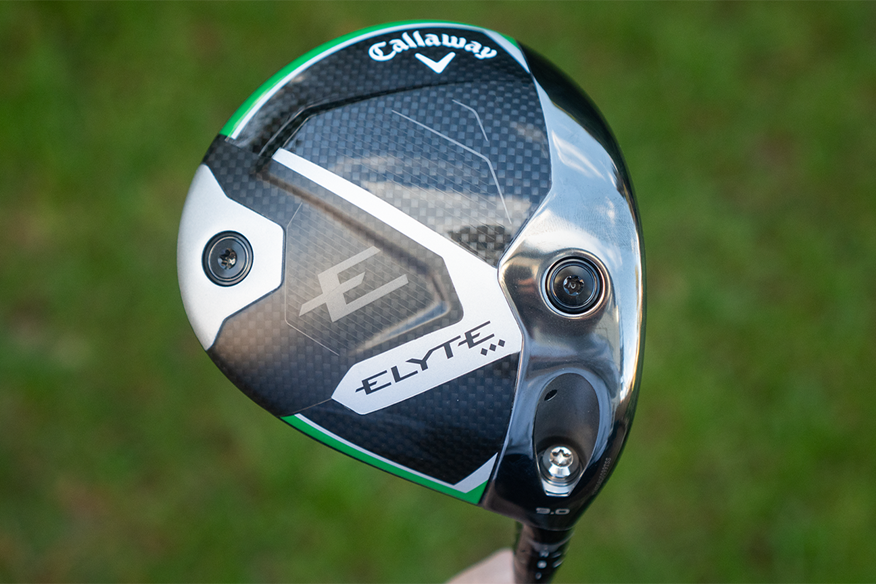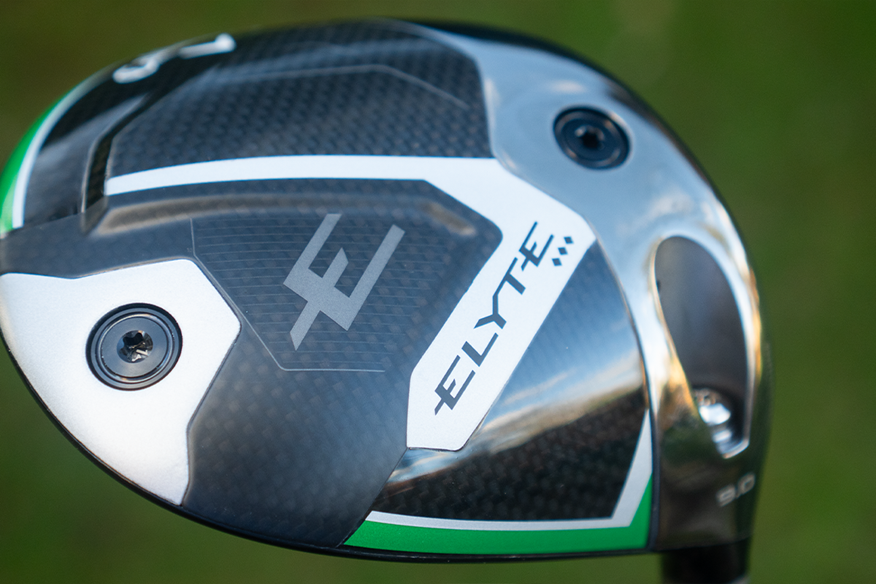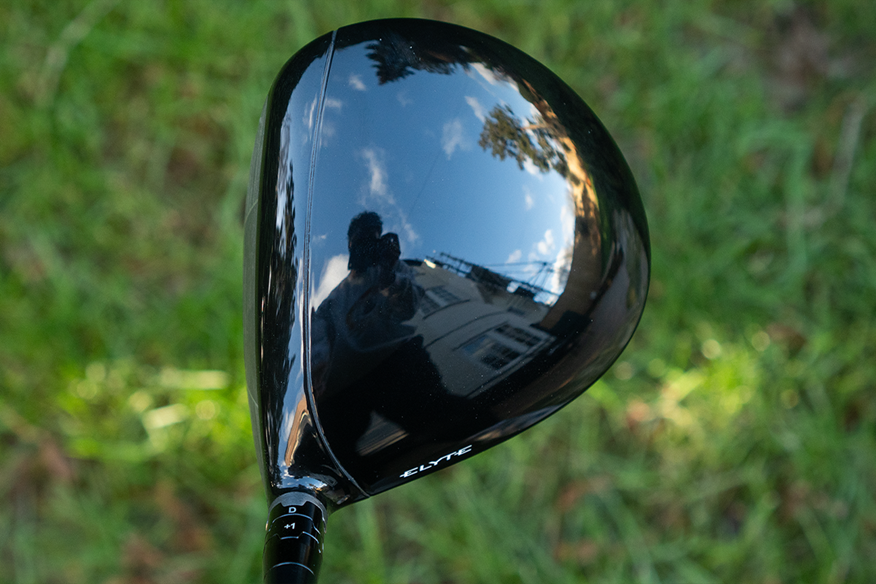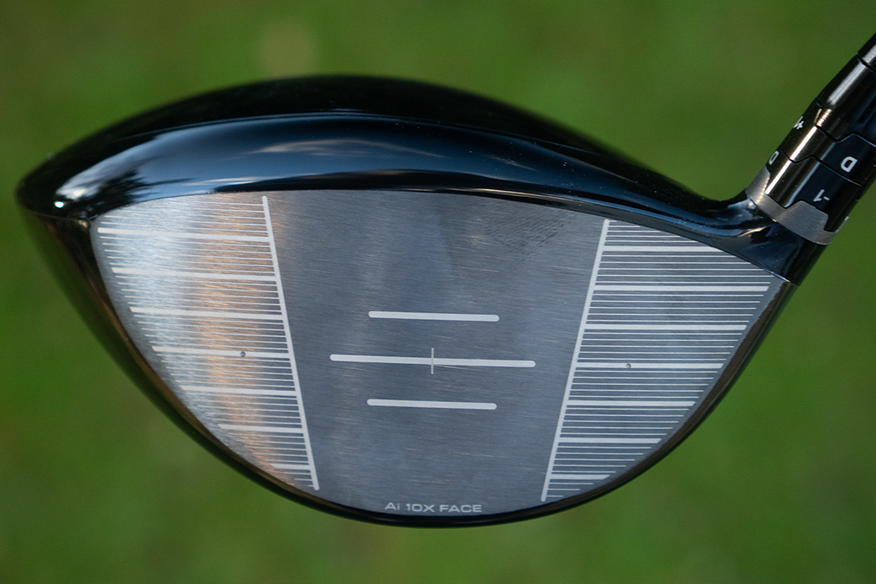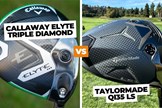TaylorMade Qi35 LS vs. Callaway Elyte Triple Diamond: 2025’s best low-spin drivers go head-to-head
Last updated:
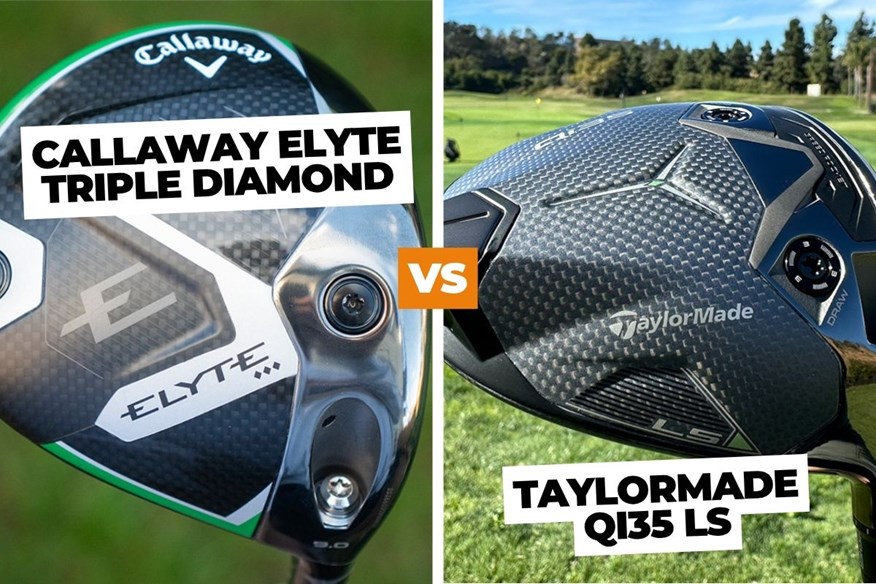
We put the Callaway Elyte Triple Diamond and TaylorMade Qi35 LS in a head-to-head comparison for ball speed, distance, forgiveness, and more. Find out which one comes out on top – and why it might not be for everyone.
If you’re looking for the best low-spin driver in 2025, you’ll almost certainly be considering the TaylorMade Qi35 LS and Callaway Elyte Triple Diamond among your options.
They’re two of the most popular models, and with good reason. Both performed brilliantly in our 2025 Golf Drivers Test – but which one should you go for? Let’s compare them head-to-head to help you decide.

How we tested
- The tester
Our test pro, Neil Wain, is a very consistent golfer, having played for England as an amateur before turning pro off a +4 handicap. He’s a highly regarded player, coach, and custom fitter. - The test
Neil hit balls with each driver, while we tracked every piece of data on a GC Quad launch monitor. Any drives that our test pro felt weren’t a fair representation of the club – severe mishits, etc – were discarded and replaced with another shot. Thanks to Neil’s remarkable consistency, this was a very rare occurrence! - The testing environment
The test was conducted under strict conditions, overseen by a former Team GB bio-mechanist, at an indoor facility. We chose to test indoors to eliminate the influence of wind or temperature changes. - The ball
We used the TaylorMade TP5 golf ball. - The specs
Both drivers were tested in the same loft and using the same shaft. Both drivers can be set with the heavier weight at the front or back of the driver head – we tested in both settings.
With the test method covered, let’s dive into the results.
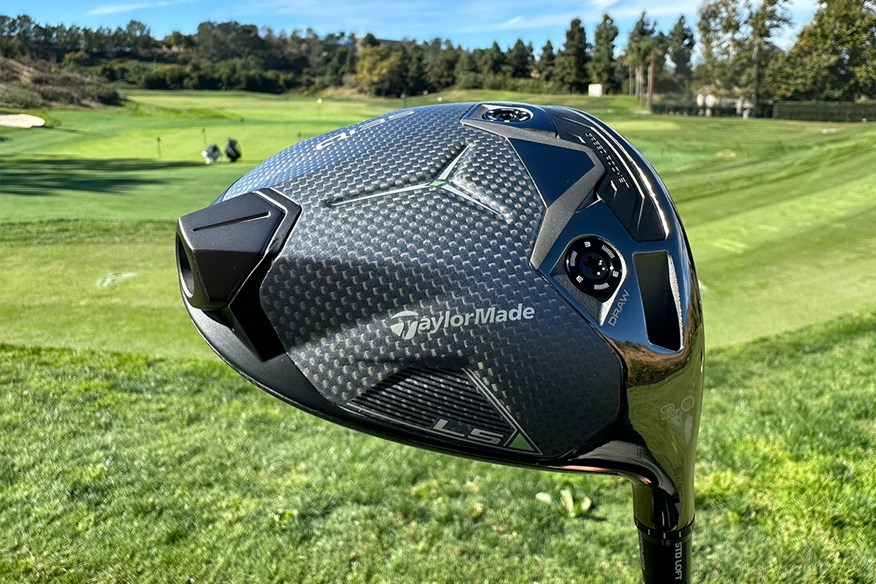
Callaway Elyte Triple Diamond vs. TaylorMade Qi35 LS: Ball speed
Low-spin drivers are designed to maximize ball speed, so this is a key category.
Advanced materials, aerodynamic head shapes, and face thickness have been engineered in both drivers to generate as much speed as possible.
Having the heavier weight at the front typically creates more ball speed, and that proved to be true here.
The Callaway Elyte Triple Diamond gained 0.8mph in ball speed when putting the heavier weight at the front, while the TaylorMade Qi35 LS gained 1.4mph.
Regardless of weight settings, it was the TaylorMade Qi35 LS that took the crown when it came to ball speed, generating 165.6 mph (weight back) and 167 mph (weight forward), compared to 164.2 mph (weight back) and 165 mph (weight forward) with the Callaway Elyte Triple Diamond.
That means that the TaylorMade, even in its more forgiving setting, generated more ball speed than the Callaway in its less forgiving, faster setting.
The reason? Clubhead speed.
| DRIVER | CLUBHEAD SPEED (MPH) | BALL SPEED (MPH) |
| TaylorMade Qi35 LS (weight forward) | 119.1 | 167 |
| TaylorMade Qi35 LS (weight back) | 117.4 | 165.6 |
| Callaway Elyte Triple Diamond (weight forward) | 116.5 | 165 |
| Callaway Elyte Triple Diamond (weight back) | 116.1 | 164.2 |
With the TaylorMade, our test pro averaged 119.1 mph of clubhead speed with the heavier weight forward, and 117.4 mph with the heavier weight back.
The Callaway generated 116.5mph (weight forward) and 116.1mph (weight back).
The shaft was the same, so that extra speed came solely from the head. It could be that the head shape is marginally more aerodynamic and therefore moves through the air quicker, or simply that Neil felt more confident with it and therefore generated a little extra speed.
Did that difference in ball speed create a gap in distance? Let’s find out…
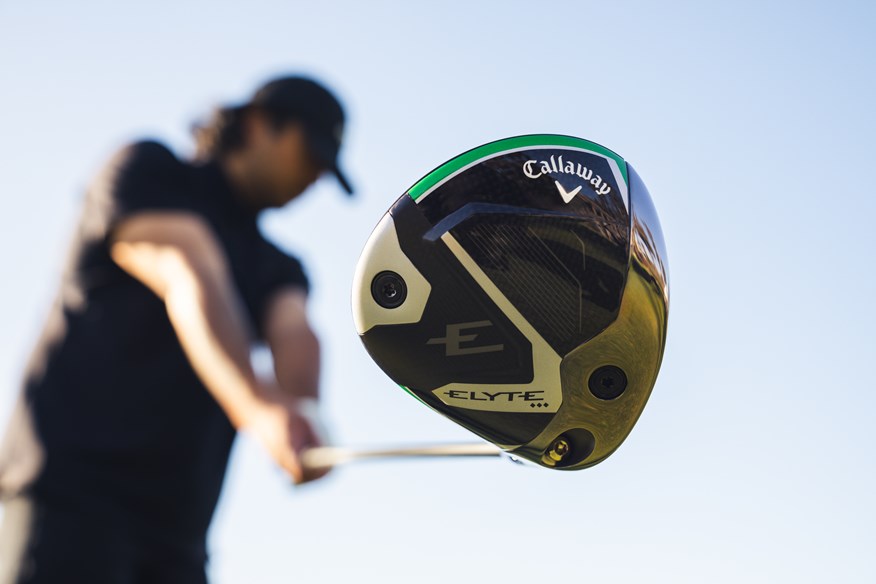
Callaway Elyte Triple Diamond vs. TaylorMade Qi35 LS: Carry distance
The carry distance results were less straightforward.
With the heavier weight at the front, the TaylorMade Qi35 LS generated considerably more distance than the Callaway Elyte Triple Diamond in the same setting: 298 yards with the TaylorMade, to 290.9 yards with the Callaway.
But, in their more forgiving settings, the Callaway Elyte Triple Diamond actually generated more distance – 286.2 yards compared to 284.6 yards with the TaylorMade – despite its lower ball speed.
A big reason for that was the spin rate, which we’ll come to shortly.
| DRIVER | CARRY DISTANCE (YARDS) |
| TaylorMade Qi35 LS (weight forward) | 298 |
| Callaway Elyte Triple Diamond (weight forward) | 290.8 |
| Callaway Elyte Triple Diamond (weight back) | 286.2 |
| TaylorMade Qi35 LS (weight back) | 284.6 |
In the most powerful but least forgiving setting (weight forward), the TaylorMade Qi35 LS was the longest driver of 2025 – and by some margin. It was 5.2 yards clear of the next longest model, the Titleist GT3.
In the same setting, the Callaway Elyte Triple Diamond LS (weight forward) ranked fourth of all drivers with its carry distance of 290.8 yards.

Callaway Elyte Triple Diamond vs. TaylorMade Qi35 LS: Spin
Both drivers had similar spin rates in the weight forward setting, and spin rates for both increased when the weight was moved to the back. That’s expected, but the TaylorMade saw a much bigger increase in spin when putting the weight back – almost 500 rpm, compared to a 300 rpm shift with the Callaway.
That gave the TaylorMade Qi35 LS a spin rate of 2,715 rpm in its weight back setting, putting it above the average spin rate of all drivers tested, across all categories.
| DRIVER | SPIN RATE (RPM) |
| Callaway Elyte Triple Diamond (weight forward) | 2,202 |
| TaylorMade Qi35 LS (weight forward) | 2,266 |
| Callaway Elyte Triple Diamond (weight back) | 2,516 |
| TaylorMade Qi35 LS (weight back) | 2,715 |
In essence, once the TaylorMade Qi35 LS was put into its more forgiving setting, it ceased to be a low-spin driver in terms of performance.
If you’re a confident enough driver of the ball to play a low-spin model in its most powerful but least forgiving setting, both of these models are right up there. But, once you put them in the more forgiving setting, the spin rates and carry distances get a lot closer to drivers from other categories, which gives you a broader choice.
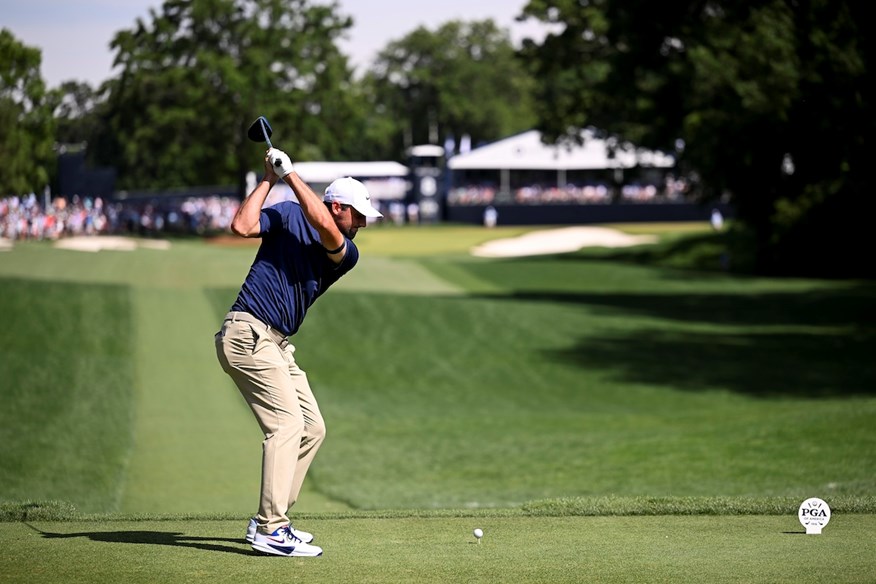
Callaway Elyte Triple Diamond vs. TaylorMade Qi35 LS: Accuracy
We like to include dispersion data where possible because it’s important – it’s no use having a driver that goes miles if it’s always 70 yards offline – but we have to stress that such metrics are heavily user-influenced and can vary from day to day. You only have to look at the best players in the world to see that. One day they can’t miss, the next they’re struggling (in relative terms) to keep it in play. Anyone who’s played golf will understand the endless mystery of why your swing produces different results from one round to the next.
And that bore out with the results from this head-to-head.
| DRIVER | DISPERSION (YARDS) |
| TaylorMade Qi35 LS (weight forward) | 23.3 |
| Callaway Elyte Triple Diamond (weight back) | 25.7 |
| Callaway Elyte Triple Diamond (weight forward) | 33.7 |
| TaylorMade Qi35 LS (weight back) | 39 |
The Callaway Elyte Triple Diamond went straighter with its heavier weight at the back, which makes sense. But the TaylorMade Qi35 LS was actually straighter in its less forgiving, weight-forward setting. That could be just the human element at play, or it could be that the TaylorMade’s relatively high spin rate with the weight back generated more curvature and therefore flew further offline – perhaps a bit of both.
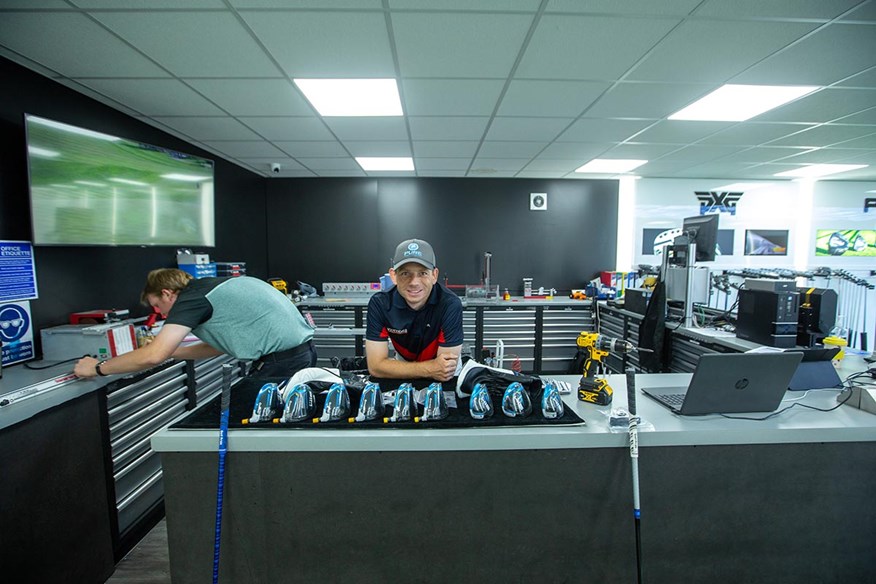
Callaway Elyte Triple Diamond vs. TaylorMade Qi35 LS: Price
The Callaway Elyte Triple Diamond has an RRP of $649.99 / £599.
The TaylorMade Qi35 LS has an RRP of $649.99 / £529.
The current exchange rate would make $649.99 roughly £476.63. That means that golfers in the UK are getting a worse deal than those in America, and it’s particularly unfavorable with the Callaway. Shop around, though, as both drivers should be available for less than the RRP.
Check the best prices here:


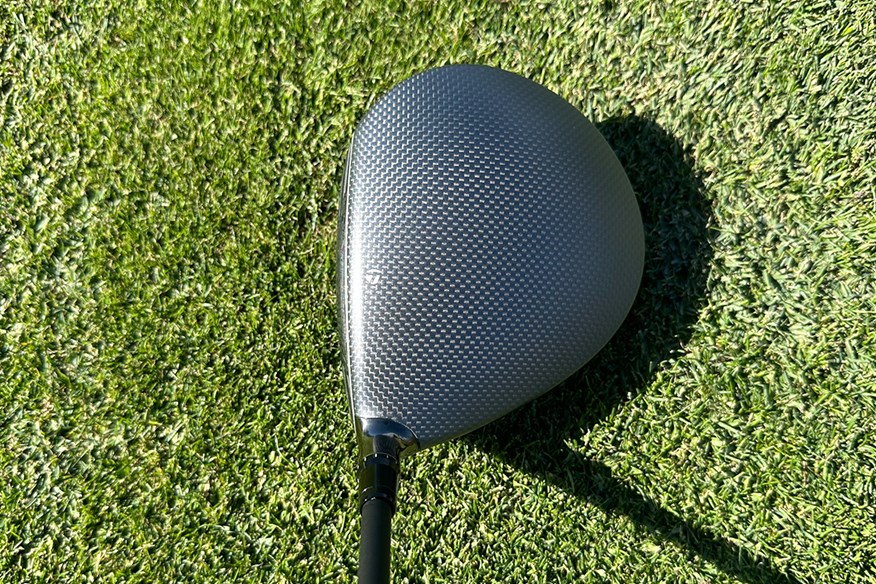
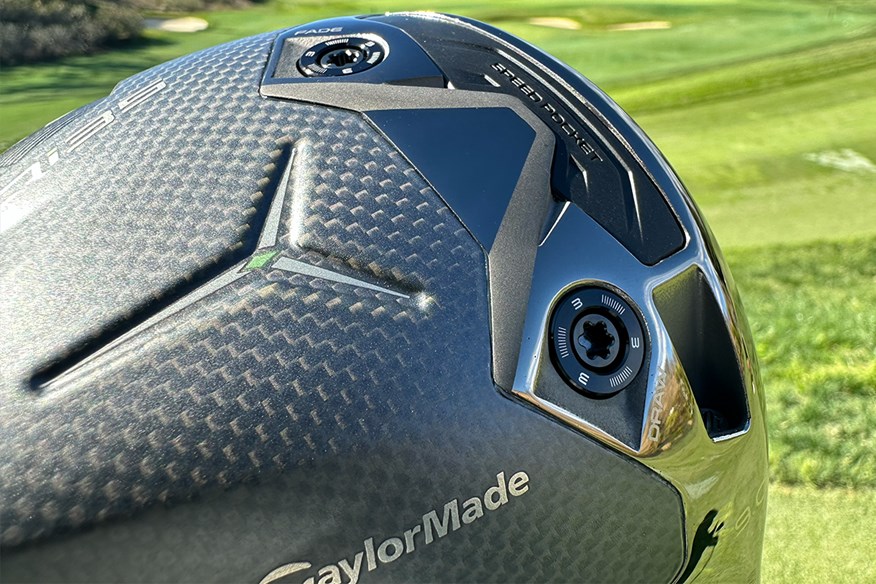

Pros
- Stunning looks at address
- One of the lowest spin models I've ever hit
- Vareid adjustability to fit any high-spin player
Cons
- For more of a niche player compared to the Core and Max model
| RRP | £529.00 / $649.00 |
| Lofts | 8º (RH), 9° / 10.5° (RH/LH) |
| Head Size | 460cc |
| Standard Shaft Length | 45.75” |
| Stock Shaft Options | Mitsubishi Kai’Li Blue DarkWave CB 60g / Mitsubishi Kai'Li White DarkWave 60g |
| Stock Grip | Golf Pride Z-Grip Black/Silver |
- Ultra Low Center of Gravity
- Multi-Material Construction
- High Moment of Inertia Design
- Trajectory Adjustment System
- Carbon Twist Face
Pros
- Stunning cosmetics down at address.
- Fast, if not the fastest lower spinning driver head.
- Impressive spin consistency across the face.
Cons
- Overall cosmetics somewhat underwhelming.
| RRP | £529.00/$649.99 |
| Lofts | 8º, 9º, 10.5º |
| Head Size | 450cc |
| Standard Shaft Length | 45.75" |
| Stock Shaft Options | Aretera EC1 Blue 65g/ Mitsubishi Chemical Tensei 1k Black 65g/ True Temper Denali Charcoal 50g |
| Stock Grip | Golf Pride Tour Velvet 360 |
- Tour-Proven Performance
- Speed from Enhanced Aerodynamics
- All-new Thermoforged Carbon crown
- New Ai10x Face
Rounding it up
If you need a low-spin driver and you’re consistent enough to not need much forgiveness, it’s hard to look past the TaylorMade Qi35 LS. With the heavier weight forward, it delivered the fastest ball speed and carry distance of any driver in 2025.
But there was a reason it wasn’t crowned the best golf driver of 2025.
And that was playability.
“We just don’t feel it’s as easy to hit as some other models,” explains TG Golf Equipment Writer Lewis Daff, a former Master Custom Fitter and Club Builder with over 5,000 fittings under his belt.
“It’s a fantastic driver, and if you strike it pure, there are absolutely no issues. But we have to consider not just what looks best on paper, but what works best for golfers in real-world conditions. We just don’t believe the TaylorMade Qi35 LS will suit enough golfers to be named the best driver of 2025. It’s a rocket launcher – it’s just not for the masses.”
Test pro Neil Wain echoed those thoughts: “Will it work for most golfers? Probably not, especially compared to the forgiveness of the normal Qi35 head, but my goodness it’s powerful. If you can keep control of your strike and direction, you won’t beat this driver in 2025.”
Which one should you choose?
If you’re choosing between the TaylorMade Qi35 LS and the Callaway Elyte Triple Diamond, it comes down to this: Are you an accomplished ball striker not worried about forgiveness?
If so, get the TaylorMade Qi35 LS, put the heavier weight forward, and reap the benefits of industry-leading ball speed and distance.
If not, it’s tougher to choose between them. And, once you start putting either of these drivers into the more forgiving setting, the increased spin rate and decreased distance bring in a lot more models that can compete with them.
